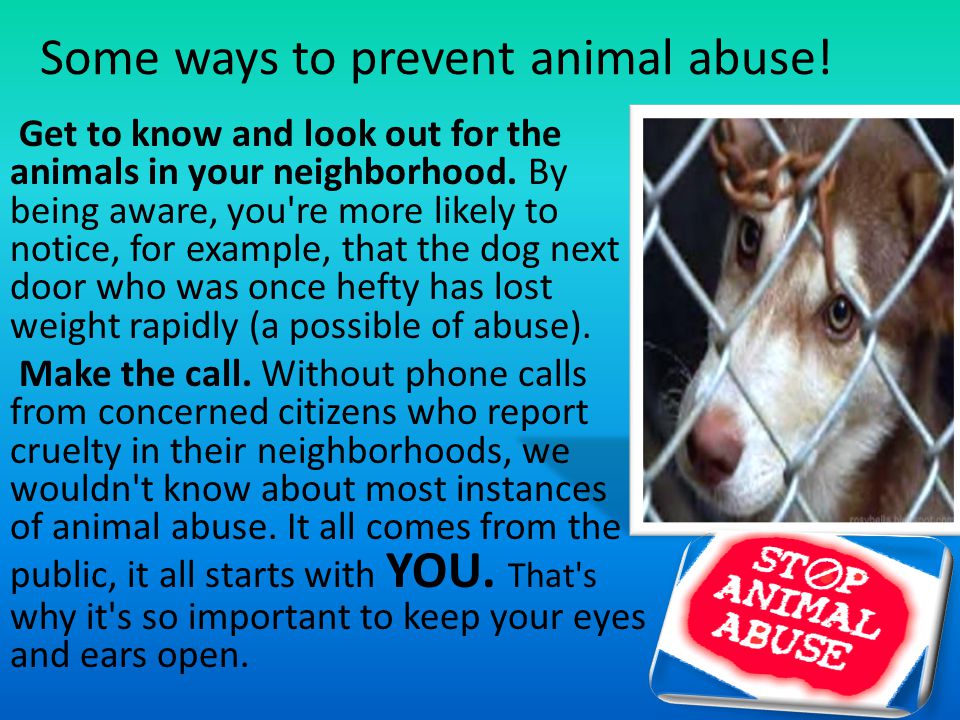Animal abuse is a distressing reality that lurks in the shadows of many households. It often goes unnoticed, particularly when the behaviors indicative of maltreatment are subtle or normalized within a home environment. Sadly, many animals endure various forms of cruelty under the guise of neglect, misunderstanding, or sheer ignorance. This discourse aims to illuminate the potential for animal abuse to transpire in our intimate spaces, often without our cognizance. By dissecting the myriad manifestations of this abuse, we can better understand how to identify the signs and implement change.
To comprehend whether animal abuse is occurring within one’s domicile, it is imperative to first delineate the categories of abuse. These can be broadly categorized into physical abuse, emotional abuse, and neglect. Each type manifests uniquely and may be interrelated or independent of one another.
Physical abuse encompasses any deliberate act of violence towards an animal. This can include beating, kicking, or using objects to inflict pain. For many, the idea of physically harming a companion animal is abhorrent; however, subtle forms of physical abuse may not be recognized as such. For example, an individual might inadvertently harm their pet through rough housing or manipulation, mistaking it for playfulness. Furthermore, aggressive training methods can lead to physical and psychological harm; methods that rely on fear and pain rather than positive reinforcement can deeply scar an animal, both physically and emotionally.
Emotional abuse, on the other hand, while more elusive, can be equally damaging. Animals are sentient beings capable of experiencing fear, anxiety, and distress. Emotional abuse may surface as constant verbal reprimanding, social isolation, or failure to provide affection and mental stimulation. Commonly, owners might not perceive their treatment of animals as abusive but fail to recognize the detrimental impact of prolonged stress. Such treatment can lead to behavioral issues like aggression or withdrawal and can severely impair an animal’s mental health.
Neglect, perhaps the most insidious form of abuse, often occurs out of oversight. It might manifest as failure to provide adequate food, water, shelter, or medical care. Neglected animals often suffer from malnourishment, untreated injuries, and chronic health conditions. Alarmingly, many pet owners may convince themselves that they are meeting their animal’s needs, relying on assumptions rather than proper veterinary care or adequate living conditions. This form of abuse can be particularly challenging to detect, as it may appear as mere apathy rather than an intentional act of cruelty.
Understanding these categories sets the groundwork for recognizing red flags within one’s home. Every pet owner should cultivate a nuanced awareness of their animal’s physical and emotional state. Behavioral changes can be symptomatic of deeper issues. For instance, an animal that has formerly been playful may become withdrawn or exhibit aggression without provocation. This transformation could be a cry for help, indicating an abusive environment or underlying health concerns that require immediate attention.
Regular veterinary check-ups are vital to ensure the physical well-being of pets. Animals often mask pain and discomfort, making it the owner’s responsibility to determine whether their pet is exhibiting signs of distress. Regularly assessing your pet’s weight, coat condition, and energy levels can provide insights into their overall health. Moreover, observing the animal’s behavior in various situations is crucial. Animals subjected to stressors may act differently in the presence of certain individuals or when exposed to specific stimuli, signaling an underlying issue that must be addressed.
Beyond the individual interactions with animals, the environment in which they are kept also plays a pivotal role in their well-being. A rich and stimulating environment is essential for any pet. Boredom can lead to destructive behaviors and, ultimately, emotional abuse. Ensure that your home is conducive to enjoyment and exploration. This could mean providing toys, engaging in interactive play, or simply allowing them adequate space to express their natural instincts.
Socialization is equally vital. Animals, especially dogs, thrive on social interactions. Isolation as a form of punishment or neglect can lead to psychological harm. Thus, it is essential to foster an environment where animals are integrated into family life, reducing the likelihood of emotional abuse through neglect.
Many individuals may grapple with the mentality of “it can’t happen to me,” assuming their pets are safe from harm within the bonds they share. However, recognizing the potential for abuse requires a critical lens. It compels us to question our own behaviors and acknowledges that abuse often isn’t overt but can be a series of small neglectful habits that accumulate over time.
Moreover, it is essential to advocate for a broader societal understanding of animal cruelty. Education is key in transforming perceptions of acceptable pet care. By addressing misconceptions, we can propel a culture of compassion and proactive intervention. Schools, communities, and veterinary practices can serve as platforms for disseminating information that empowers individuals to promote animal welfare. This awareness ensures that individuals do not turn a blind eye to potential abuse but instead become proactive guardians of animal rights.
Ultimately, combatting the insidious nature of animal abuse begins at home. By fostering awareness, understanding, and compassion, we not only safeguard our own pets but also cultivate a community that values the welfare of all animals. It is our collective responsibility to ensure that no animal suffers in silence, and that all creatures are afforded the dignity and respect they inherently deserve.






